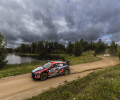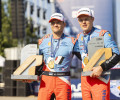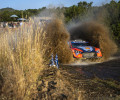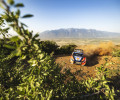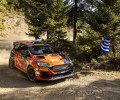WRC - THE 2017 WORLD RALLY CAR - ON BOARD WITH SAFETY
During a period of unprecedented collaboration, led by the FIA and with the Global Institute for Motor Sport Safety and the manufacturers involved in the FIA World Rally Championship, even further enhancements have been made to make rally cars ever safer. The resulting safety package for the dynamic all-new era World Rally Cars has, as such, set new standards in the sport.
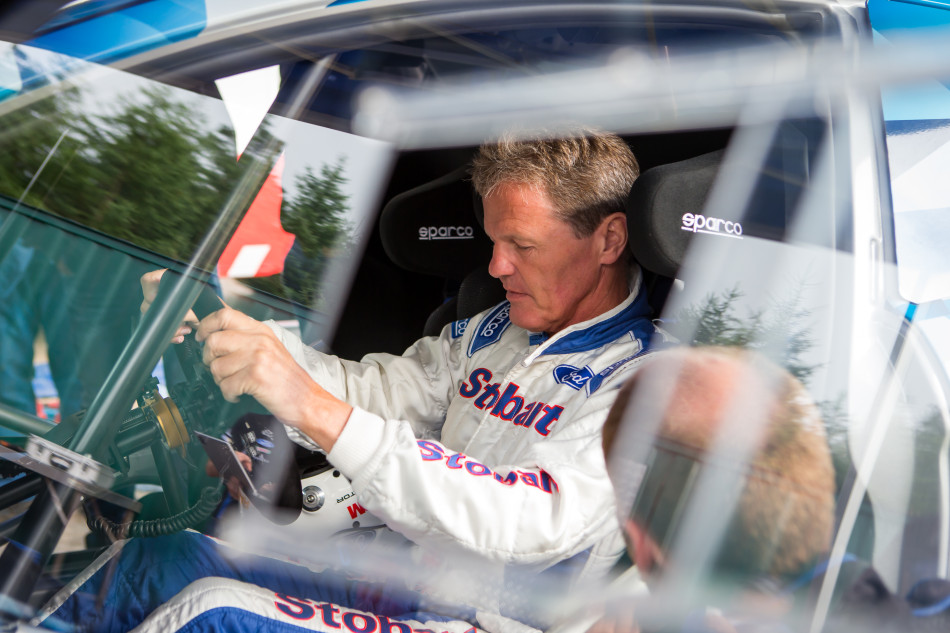
Key areas have been revised to provide even greater protection, specifically during lateral tree impacts, building on the advanced side impact system first developed by the FIA and FIA Institute’s Closed Car Research Group in 2008.
The first key area is the energy absorbing foam in the car, which has been significantly reviewed around three main parameters; extended space for the foam from 200mm to a minimum of 240mm, positioning of the foam more closely around the seats, and an extension of the foam along the car to behind the seats. In addition to a potential 20% increase in energy management, the foam itself has the highest energy absorption figures recorded, as well as the ability to offer high-level protection in extreme temperatures.
Structural door sill reinforcements are also now mandatory - albeit already included in some of the manufacturers’ world rally cars - to help prevent items such as fence posts penetrating the car, and additional padding on the seat head support will limit head movement in a better way.
Malcolm Wilson, Team Principal at the M-Sport World Rally Team, has been involved in the sport for over 40 years as a driver and team owner. The Briton recalls all too well how the sport has evolved immeasurably since he first started competing and applauds the progress made by the FIA and manufacturers as they work together for ever safer competition cars. He takes time to explain the latest enhancements in rally car safety.
Safety in rally cars, as well as equipment for drivers and co-drivers, has improved immeasurably over the years; how would you explain the way you’ve seen safety develop over the years to today?
Malcolm Wilson:
“I just wish the current safety standards had been around when I was driving, because unfortunately I suffered quite a bad accident and a lot has evolved since then. As an example, in the very early days the first rally cars didn’t have a roll cage down the front to protect the crew from any roll over. Then they moved on and were aluminium, but of course there was no strength and it was just to meet the regulations. So there’s been a big step in roll cage design, to the point now where it is the main structure of the car which picks up on all the suspension points, so basically you’re transferring the load right throughout the entire bodyshell. But that’s just part of it; the seat is now like a safety shell, which of course is now designed so it moves into the car so the occupants don’t get injured, but on the other hand it protects the driver as well. And of course the big thing is the teams - all the manufacturers - you learn from every accident you have and we always work very closely with the FIA and its safety team so we can always keep improving. That’s a really positive thing and there’s been a big step again for the 2017 regulations.”
The 2017 World Rally Car sets a new standard in rally car safety; how closely have you and the other manufacturers been involved with the FIA and the Global Institute for Motor Sport Safety on the development of the latest package?
Malcolm Wilson:
“I think it’s there for everyone to see in terms of the technical regulations, as a whole, in the fact how well managed the regulations are because of the close competitiveness of all the manufacturers; you’ve got the four manufacturers and they’re all capable of winning rallies and winning stages. So that’s the competition element controlled by the Technical Department. Then we have our technical engineers working with the FIA, always evolving and looking for ways to improve the safety of the crew, as they’re our most valuable asset.
“Working with the FIA and the Institute really started to move on from 2008, and of course then all the manufacturers, technical teams, FIA safety team and various people in different bodies tried to make sure we could cover as many aspects as possible. You always have to have an open mind on safety and you always learn from every single accident, you never get two the same and even in Monte-Carlo in 2016 we experienced something we haven’t seen before, so again we’ve made improvements for that for our 2017 car.
“All the teams are competing against each other, everyone is trying to win, but on aspects of safety, everybody is united.”
There are two key areas where safety in next year’s World Rally Car has taken another step forward in managing lateral impacts. Firstly, what are the upgrades to the energy absorbing material within the door cavities?
Malcolm Wilson:
“The current situation is that we have the crash protection already; the energy absorbing foam on the inside of the door panel and around the area close to where the seats are, and a carbon fibre door panel which has got some honeycomb aluminium to give some strength. The new regulations for 2017 stipulate the foam must be increased from 200mm to 240mm in depth, which provides a 20% increase in energy management and side impact protection. The foam must also now completely fill the whole door, and because you need 240mm then we have to create another door skin which goes on the outside of the original door skin so that you have whatever distance you require to get the 240mm and extra improvement in the energy absorbing foam.
“On top of the extra energy absorbing foam around the door, in the new regulations for next year it’s increased further so you have the main structure of the roll cage covered. On the door line we’ve also increased that by 200mm behind the main structure, so basically all the area surrounding the driver and co-driver is protected.”
The second element is the enhanced protection of the door sills against intrusion. What has been done here and why?
Malcolm Wilson:
“Sill protection is another big aspect, because those are the accidents that we as the manufacturers, and the drivers and co-drivers fear; the side impact into a post or a tree. We actually introduced a sill beam in our cars back in 2006, but that has now become compulsory as over the years we’ve extended and extended it because we’ve been involved in accidents where you’ve had an impact in front of the seat, and of course you need as much sill protection there. So that now is a regulation from the FIA for next year, to extend that even further.
Are there any other key changes?
Malcolm Wilson:
“What will happen with the seat area is that we will reduce the gap between the crash helmet in relation to the proximity to the high-strength area of the seat. So what we will end up with next year is a 50mm gap either side of the crash helmet and this, coupled with the HANS, will mean there is less head movement than previously and obviously less chance of any injury.

“We’re also working on the seat mountings so that we can find a way that if there are any side impacts we can find the most efficient way that the seat moves, or doesn’t move, in relation to the impact you take in a side impact accident.”
How comfortable are you with the safety work that has been done on next year’s car? It seems there has been a real emphasis on not only making the cars more spectacular, but also really developing the safety features and technology?
Malcolm Wilson:
“It’s a fantastic new era and the cars are going to be very very spectacular. But of course so much more of the safety aspect has gone into it and it’s really pleasing for me to see because, as I said before, the drivers and co-drivers are our most valuable asset and the way everyone has worked with the FIA and the Institute, I think we’re in for the most exciting period for a long long time in WRC. The levels of safety and improvements to the safety shell and every single safety aspect on the car has been improved over where we currently are. We have set new standards in terms of safety.”
Malcolm Wilson explains some of the development work in rally car safety:

 Facebook
Facebook Twitter
Twitter